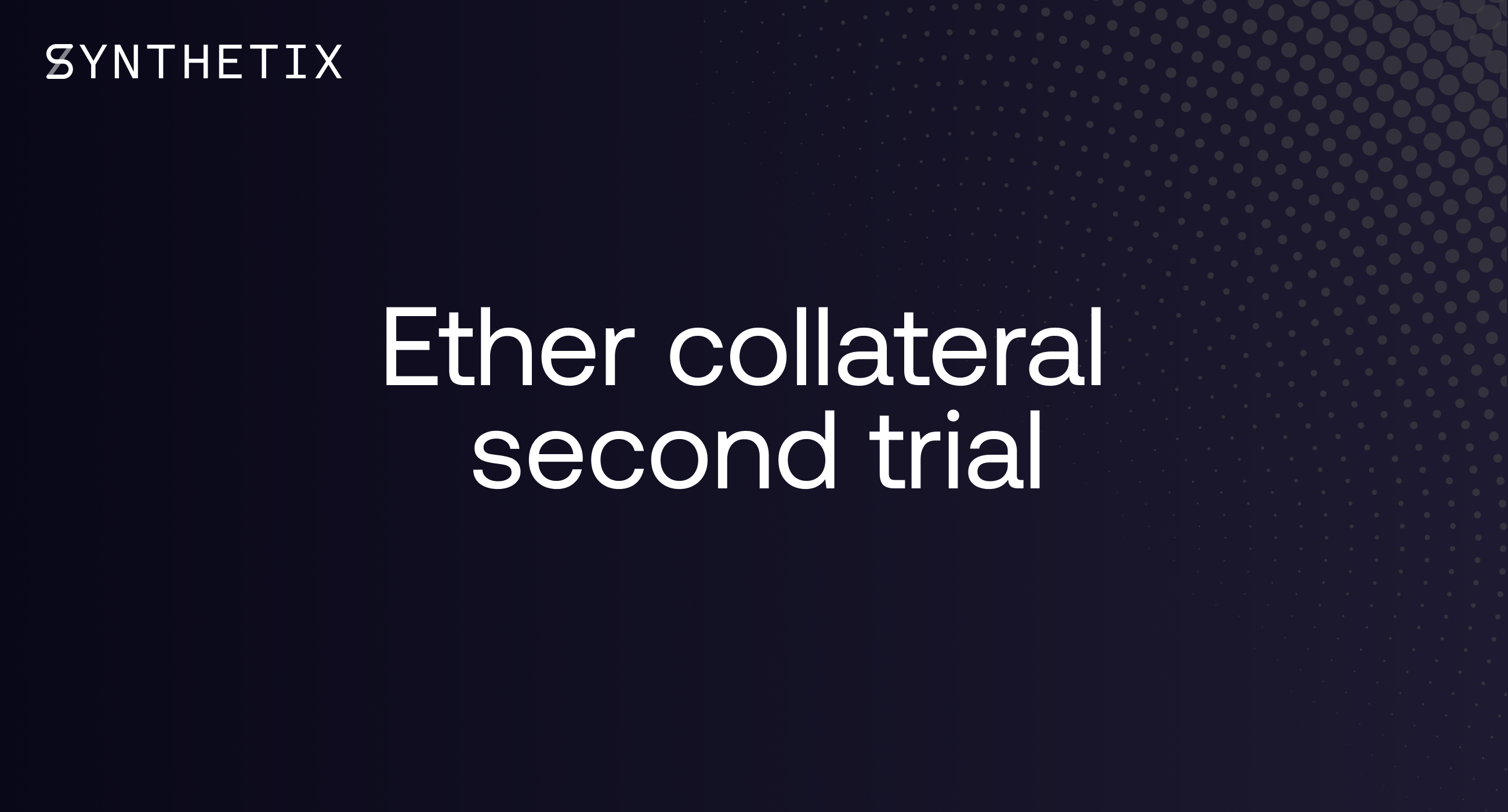Everything you need to know before participating in the second Ether collateral trial
Key information before you open an sETH loan

One of the items launched in this week’s Spica release is the second trial for Ether collateral. There are many benefits to the protocol for successfully integrating Ether as collateral into the Synthetix protocol, including safety, scalability, and user onboarding.
For more information, visit the original blog post outlining the benefits (please note the sETH liquidity pool incentive has been completed). For potential ETH stakers, the intended purpose of introducing Ether as collateral is to allow people to keep their ETH while using it to trade on Synthetix.Exchange and potentially farm other yield. To take out a loan against your ETH, visit the 'Loans' tab in Synthetix.Exchange.
Three month trial
This trial is expected to run for at least three months. It allows you to borrow sETH by staking ETH as collateral into a smart contract. The first trial required a 150% collateralisation ratio, but as per SCCP-27 this has been reduced to 125%, meaning that if you stake 100 ETH, you can borrow 80 sETH.
sETH Loan Fees
Anyone who takes out an sETH loan must pay a 5% annualised interest rate, which is paid in ETH at the time of closing the loan. This is sent to the feePool, which is distributed to SNX stakers.
Update (October 13): We have removed the interest rate as per SCCP-44 to allow people to close their loans without the dependency on the Depot.
Liquidation possibility — funds at risk
At the end of the three month trial, ETH stakers must have closed their loans within the one-week grace period or they can be liquidated by anyone who calls the liquidation function. Liquidators must pay the sETH required to close a loan, and in return receive the ETH staked for that loan, thus making a 25% profit less fees of 5% interest plus 50 bips minting fee.
Stay informed
If you stake your ETH and open a sETH loan, please ensure you follow Synthetix on Twitter and Discord to stay tuned for any updates, including when the trial period closes.

